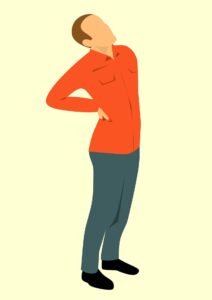
The Importance of Reconditioning Exercises for Lower Back Pain and Spinal Stenosis After Physical Therapy
Lower back pain and spinal stenosis can significantly impact your quality of life, making everyday activities challenging and painful. While physical therapy is crucial in managing these conditions, continuing with reconditioning exercises after completing your therapy sessions is equally important. Here’s why:
1. Maintaining Progress
Physical therapy helps you regain strength, flexibility, and mobility. However, discontinuing exercises after therapy can lead to a regression in these gains. Reconditioning exercises help maintain and even improve the progress made during physical therapy1.
2. Preventing Recurrence
Regular reconditioning exercises strengthen the muscles supporting your spine, reducing the likelihood of future injuries or flare-ups. Stronger muscles provide better support and stability, essential for preventing the recurrence of lower back pain and spinal stenosis symptoms1.
3. Enhancing Mobility and Flexibility
Exercises such as pelvic tilts, knee hugs, and hip bridges can improve spinal mobility and flexibility1. Enhanced flexibility reduces stiffness and improves your range of motion, making daily activities easier and less painful.
4. Improving Posture
Poor posture can exacerbate lower back pain and spinal stenosis. Reconditioning exercises strengthen the core and back muscles, promoting better posture and alignment1. Good posture reduces strain on the spine and helps alleviate pain.
5. Boosting Overall Fitness
Reconditioning exercises improve overall fitness by improving cardiovascular health, muscle strength, and endurance1. A well-rounded fitness routine can enhance well-being and make you more resilient to physical stress.
6. Reducing Pain
Targeted exercises increase blood flow to the affected areas, which can help reduce pain and inflammation2. Consistent exercise can also release endorphins, the body’s natural painkillers, providing additional relief from discomfort.
7. Enhancing Balance and Coordination
Exercises focusing on balance and coordination, such as single-leg stands and stability ball exercises, can help improve your stability3. Better balance reduces the risk of falls and injuries, which is particularly important for individuals with spinal stenosis.
8. Supporting Mental Health
Chronic pain can take a toll on your mental health, leading to anxiety and depression. Regular exercise has been shown to improve mood and reduce symptoms of anxiety and depression4. Staying active through reconditioning exercises can boost mental health, helping you feel more positive and motivated.
9. Customizable and Adaptable
Reconditioning exercises can be tailored to your specific needs and limitations. Whether you prefer low-impact activities like swimming and walking or more targeted exercises like lumbar flexions and bridges, there are options to suit everyone1.
10. Long-Term Health Benefits
Consistently performing reconditioning exercises can lead to long-term health benefits, including improved bone density, cardiovascular health, and enhanced muscle strength1. These benefits contribute to a healthier, more active lifestyle, reducing the risk of other health issues.
Conclusion
Continuing with reconditioning exercises after physical therapy is essential for managing lower back pain and spinal stenosis. These exercises help maintain progress during therapy, prevent recurrence, improve mobility and flexibility, and provide numerous other physical and mental health benefits. By incorporating reconditioning exercises into your routine, you can enjoy a better quality of life and stay active and pain-free.
If you’re unsure where to start, consider consulting with a physical therapist or fitness professional to develop a personalized reconditioning exercise plan that meets your needs and goals.
Are you currently doing reconditioning exercises, or would you like some recommendations to get started?
4: Mayo Clinic 1: Medical News Today 2: BMHSC 3: Verywell Health

